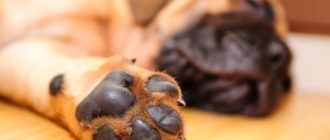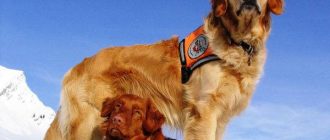Arctic – icy expanses, endless snow, permafrost. It seems that living beings have no place in the kingdom of cold, but this is not So. Let’s find out which animals are the northernmost in the world.
Content
- 1 birds
- 1.1 Pink Gull
- 1.2 Kaira
- 1.3 common eider
- 1.4 Arctic Owl
- 1.5 Arctic Tern
- 1.6 Partridge
- 1.7 Atlantic impasse
- 1.8 White Arctic goose
- 1.9 Loon
- 1.10 Black Goose
- 2 Aquatic animals
- 2.1 harp seal
- 2.2 Sea Bunny
- 2.3 harbor seal
- 2.4 Ringed Seal
- 2.5 Walrus
- 2.6 Greenland whale
- 2.7 Narwhal
- 2.8 Orca
- 2.9 Beluga whale
- 3 Land animals
- 3.1 Musk ox
- 3.2 Reindeer
- 3.3 Snow ram
- 3.4 Polar bear
- 3.5 Arctic hare
- 3.6 Lemming
- 3.7 Arctic fox
- 3.8 polar wolf
- 3.9 Wolverine
- 3.10 Ermine
Birds
Contents
In the northern territories, many birds live. Most of them flies away to winter in the warm lands, some breed offspring in other regions. Feet of waterfowl lack feathers, but penetrated by blood vessels – this is protection against hypothermia. The plumage of arctic birds is often light, which allows them disguise in the background of snow.
Pink gull
The body length of the bird is about 35 cm. A pink gull eats insects, small mollusks, during wanderings – fish and crustaceans.
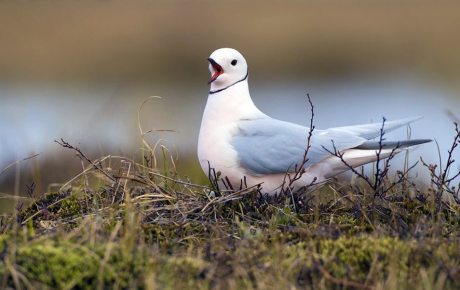
The voice of this species is much higher and softer than that of other gulls, very diverse
Guillemot
Medium-sized birds: 38 to 46 cm. Feed on small fish 5 to 15 cm long, crustaceans, mollusks.
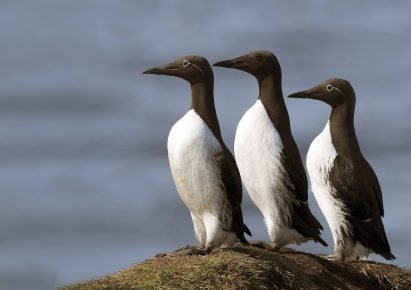
There are thin-billed and thick-billed guillemots.
Common eider
The bird belongs to ducks, but larger than its counterparts – 50–71 cm. The eider is fed by small marine inhabitants, including fish.
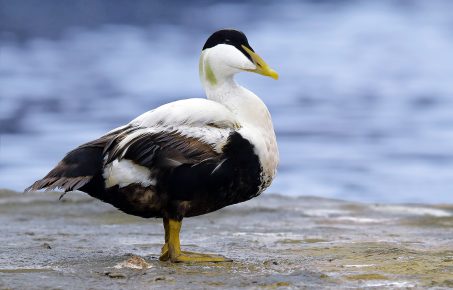
With light elastic down, the eiders insulate the clothes of the polar explorers and climbers
Polar owl
The size of the bird reaches 65–70 cm. The polar owl is active predator, preys on small animals and birds, does not neglect fish and carrion.
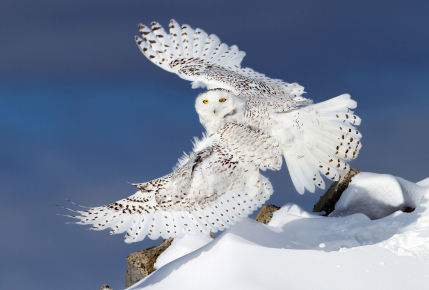
Another name for polar owl is white
Arctic Tern
The body length of the polar tern is 36–43 cm. Birds hunt fish, crustaceans, mollusks, insects, earthworms. In places nesting can also eat berries.
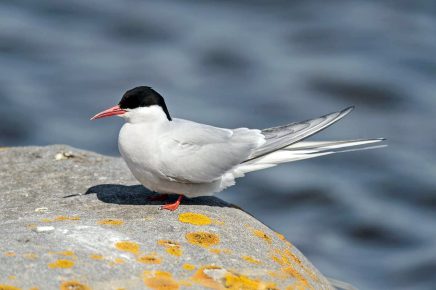
Each year, the Arctic Tern flies for the winter from the Arctic to Antarctica, due to these flights, the bird observes two summer
Partridge
Bird nutrition is predominantly vegetable. White size partridges 35-38 cm.

From the northern regions – the tundra, the Arctic islands – white partridges fly away for the winter to the south
Atlantic impasse
Birds feed mainly on fish, sometimes they also eat small ones. shellfish and shrimp. The size of the Atlantic dead end is 30–35 cm.
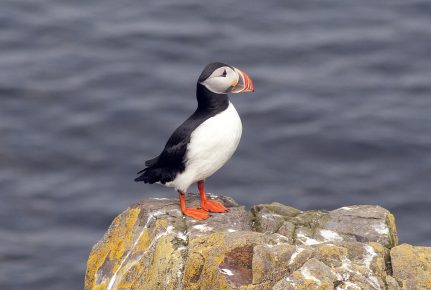
The Russian name “dead end” comes from the word “dumb” and is associated with massive, rounded shape of the bird’s beak
White Arctic Goose
White geese are medium-sized, 60 to 75 cm long. by plants.
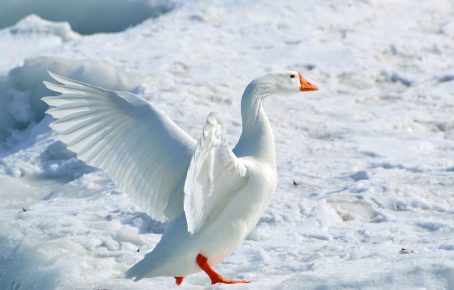
In Russia, white goose is common on the island Wrangel, in the north-east of Yakutia and Chukotka
Loon
They feed almost exclusively on small fish. Length of Loon birds from 53 to 91 cm.

Loons – waterfowl, spend their whole lives on the water either in the immediate vicinity of it
Goose Goose
The size of the bird is 56–69 cm. The diet of the black brant consists of plant foods.
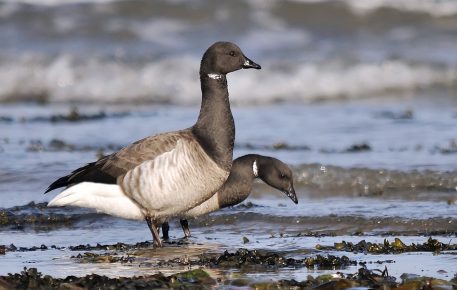
In Russia, there is an Atlantic subspecies of a black brant, Franz Joseph nesting on Earth
Water animals
Seals living in the Far North have thick under skin fat layer used for thermal insulation. Underwater mammals, such as whales, also have a large mass body.
Harp seal
The length of adult animals is up to 1.8 m, and the mass is from 120 to 140 kg. IN Harp seal diets include fish and invertebrates.

Harp seals are otherwise called bald, and their cubs are squirrels
Sea hare
One of the largest real seals and the largest in the fauna Of Russia. Body length – up to 2.5 m. It feeds mainly invertebrates and benthic fish.

Another name for the sea hare is Lahtak.
Harbor seal
Adults reach 1.85 m in length and 132 kg of weight. The common seal, like other subspecies, feeds mainly fish, and sometimes invertebrates, crustaceans and mollusks.

Two subspecies of the common seal – European and island – listed in the Red Book
Ringed seal
The length of adult animals is from 1.1 to 1.5 m. Ringed seal – a close relative of the common seal.

In the Arctic Ocean, the White Sea subspecies ringed lives seals
Walrus
Huge animals, the length of males can reach 4.5 m, females – 3.7 m. The basis of walrus diet is bottom invertebrates, and also some types of fish. They can also attack seals.

Walrus weight – up to 2 tons in males and up to 1 ton in females
Bowhead whale
The maximum recorded length of the animal is 22 m, and the weight may reach 100 tons. Greenland whales feed on plankton, filtering water through whalebone records.

Bowhead whale dives to a depth of 200 m and may remain under water for up to 40 minutes
Narwhal
The body length of an adult narwhal usually reaches 3.8–4.5 m, and newborns – 1–1.5 m. Narwhals feed mainly on cephalopods mollusks, to a lesser extent – crustaceans and fish.
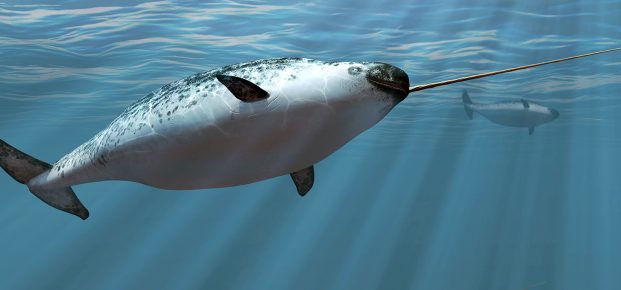
The outgrowth on the face of the narwhal is used as a club for stunning, perhaps it also allows you to sense pressure changes and water temperature
Killer whale
The males of the animal reach a length of 10 m and have a mass of up to 8 tons, females – up to 8.7 m long. Killer whale – a wide range predator food, can eat fish and cephalopods, as well as seals, dolphins, whales.

Killer whales are dolphin, not cetacean
Beluga whale
The basis of animal nutrition is fish and to a lesser extent crustaceans and cephalopods. The largest male beluga whales reach 6 m in length and 2 tons of mass, females are smaller.
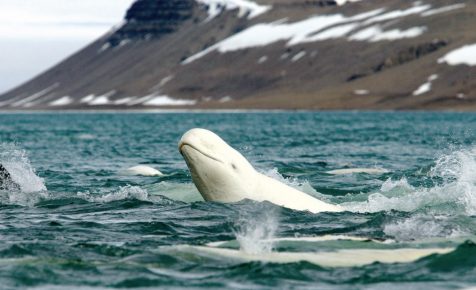
Beluga whale skin color changes with age: newborns are blue and dark blue, after a year they turn gray and bluish-gray, individuals older than 3-5 years old are pure white
Land animals
Arctic animals have a thicker fur coat, warming them in harsh conditions. Most of them are white. helps animals hide from predators, and predators, in their turn to be invisible while hunting in the snowy expanses.
Musk ox
The body length of males is 2.1–2.6 m, and of females 1.9–2.4 m. Musk oxen are herbivores, eat dry most of the year plants that dig out from under the snow.

Another name for a musk ox is a musky bull
Reindeer
The size of the animal reaches 2–2.2 m, but the tundra is smaller. The value depends on the abundance of feed. Reindeer feed plants, most of the time they get food from under the snow.
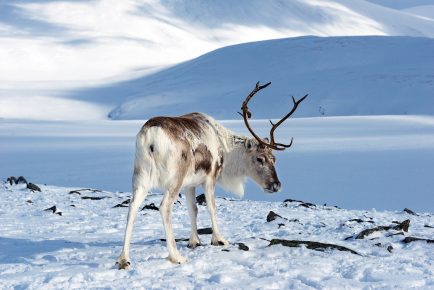
In North America, this deer is called a caribou.
Snow ram
An animal of medium size, the body length of adult males is 140-188 cm, height at the withers – 76-112 cm, weight – 56-150 kg. Females are a bit smaller. Snow rams are herbivores.
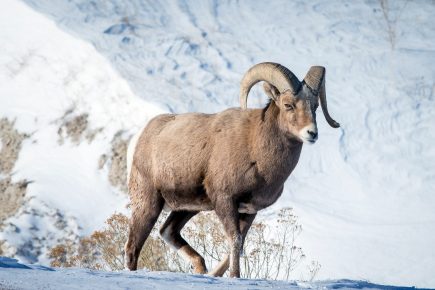
Other names for bighorn sheep are Chubuk or Rhino.
Polar bear
The length of the predator reaches 3 m, weight up to 1 ton. Primary mining polar bear – seals, walruses and other marine animals.
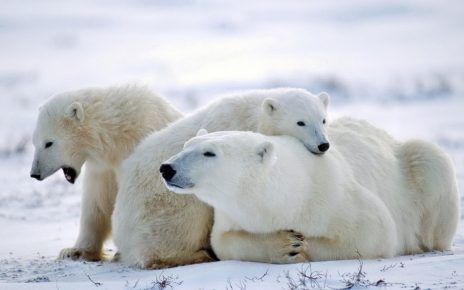
Polar bear – the largest representative of the family bearish
Arctic hare
On average, reaches a length of 55-70 cm, in North America is the largest hare. Arctic hare – herbivore animal.
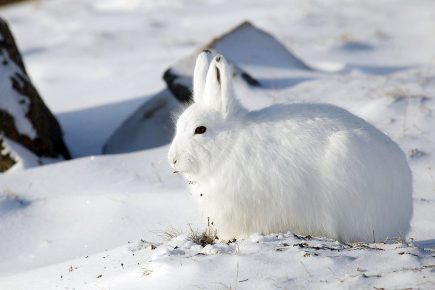
Polar whites often live alone, but can also be collected in flocks
Lemming
The body length of the rodent is 10–15 cm, the mass of the animal is 20–70 g. Lemmings eat plant foods, but seasonal foods can be insects.
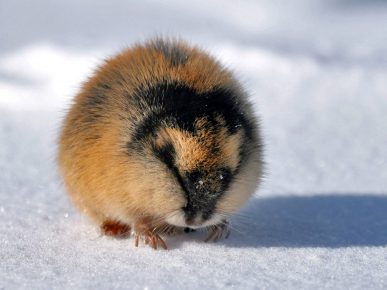
With an abundance of feed, lemmings can breed even under snow.
Arctic fox
The size of the animal is 50–75 cm, the tail is 25–30 cm. The Arctic fox is omnivorous, in the composition of its feed includes about 125 species of animals and 25 species plants, but the basis of the diet is rodents and birds.
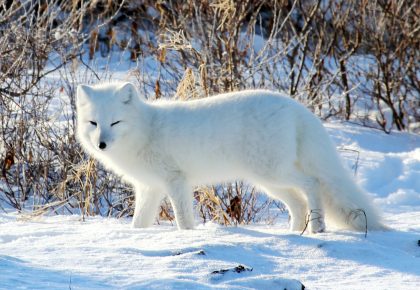
Other names for arctic fox – polar fox, arctic fox
polar Wolf
The length of the animal without a tail is 1.3-1.5 m. The polar wolf is a predator, whose main prey is lemmings and polar hares, but sometimes a flock preys on musk oxen or reindeer.
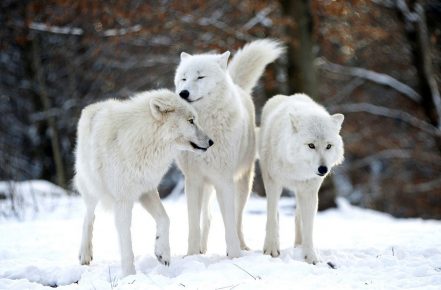
The polar wolf is well adapted to life in the Arctic – it can live for years at sub-zero temperatures for months not to see sunlight and weeks without food
Wolverine
Externally, the animal resembles a bear or badger, the size of the body 70–86 cm. Wolverines are predators, they can also eat carrion.
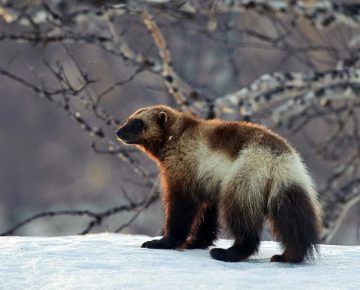
Wolverine makes sounds similar to fox yapping
Ermine
A small animal, body length 17–38 cm. An ermine is a predator, preying on rodents, birds, fish, lizards.
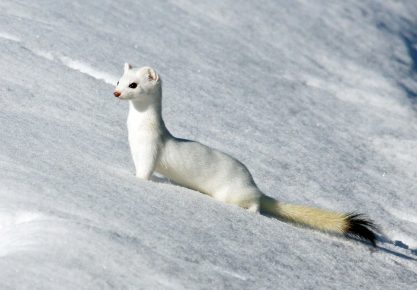
The ermine area is vast, it was even brought to New Zealand, where it multiplied uncontrollably and turned into a pest
Despite the cold, many animals live in the Arctic, adapted to harsh conditions. Amazing and beautiful, these animals prove that life is boiling in any corner of our planet.



